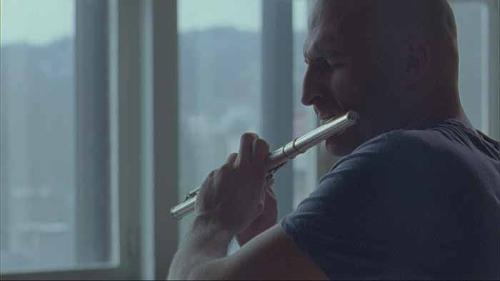.jpg)
Arte Magra: From the Opaque was a project, held over four weeks in different sites across the city of Adelaide, which incorporated the works of fourteen artists. The title of the project translates from the Italian as “lean or meagre art,” it borrows from ideas that have emerged from arte povera, conceptual art and relational aesthetics. The Arte Magra project may be situated in a continuing line of inquiry extending from these artistic movements, and is influenced by what North American art historian Claire Bishop, author of Artificial Hells: Participatory Art and the Politics of Spectatorship, calls the “social turn” in contemporary art. Artistic process and art's consumption were central focuses for Arte Magra, and the project often recalled the exploration of the forces of tension and gravity, iconoclasm and risk and, in particular, the ironic alchemy of Piero Manzoni selling his own shit for the price of its weight in gold.
Accordingly, Jessie Lumb transmuted the flat, grey residue of spat-out chewing gum compressed by footsteps into the city sidewalk into cheerful splotches of vibrant hues with the application of a little paint and a great deal of patience. Aurelia Carbone and Tanya Schultz (Pip & Pop) collaborated to create a magical rainbow installation and photographic work (with the aid of a camera suspended within a sparkly cloud above the installation in the AEAF gallery space), by transforming ordinary rocks into a beautiful rainbow, an optical illusion and a moment of delight and enchantment for the participating audience.
The title of the project also borrowed from one of the last century’s great experimental authors, Italo Calvino. His writing conjures up the image of the sunny and the opaque, source and shadow. His Invisible Cities explores the notion that what makes up a city is not so much its physical structure but the impression it imparts upon its visitors, and the ways in which its inhabitants move within it and their experience of the place. The arte magra curators embraced this awareness of city life and invited artists to create small scale site specific interventions and performances that generated moments, spaces for contemplation across Adelaide, and so drew to our attention many of the unnoticed details that make up this town.
Spectators were led from artwork to event across the city, on a treasure hunting expedition of sorts aided by a map, and this allowed for the exploration of common localities in the city with fresh eyes. The map allowed participants to curate their own experiences of the event, to dip in and out, and to return; to choose their own adventures from the lean ether.
A generosity of spirit was felt strongly in many of the works, particularly in Matthew Bradley’s furnace. Constructed from found objects, the furnace provided warmth, and offered a place for spectators to meet and exchange ideas, and was overall presented as an offering to the audience. It allowed for meditations on gathering, change, and being present in an art experience, in the moment. This participation in a shared activity, cherished by proponents of relational art, was echoed in David Cross’s work, in which the artist stood in an open space continually pumping an inflatable object which covered his head. Spectators could participate by slipping their heads into the opposite end of the object and contributing to its inflation using a foot-pedal pump.
In this way, artist and spectator shared the limited air within the inflatable, and worked together to achieve a synchronicity in the operation of the foot pumps. In this surreal intimate and compressed space, the participant and the artist worked together in a relationship that emphasised passivity and activity in the production, consumption and reception of art. The artist’s movements and gestures were directly related to action and response, and a sense of giving power to the participating audience, to allow spectators to discover their role in the work.
Although the promotion of Arte Magra was quite limited, the project embraced the ideal of active spectatorship and sought to bring joy and generosity of spirit to the streets of Adelaide. In its many manifestations it sparked the curiosity of the community, the joy of an encounter with an unexpected art action in an otherwise commonplace cityscape. From lean origins, this project summoned a most generous offering.












